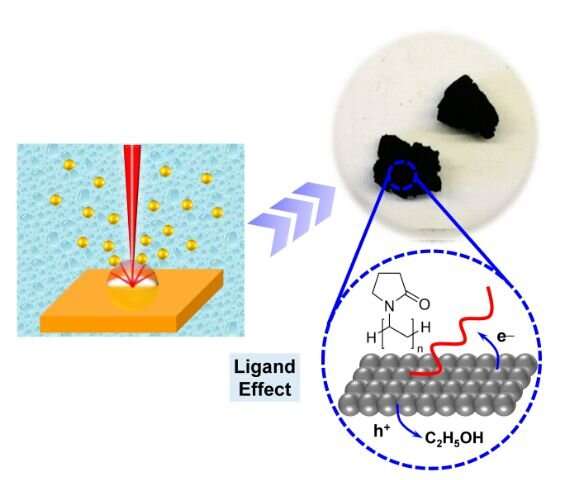Manipulating ligands: A new dimension for promoting electrocatalysis performance by noble metal aerogels

Chemists at TU Dresden have fabricated surface-clean noble metal aerogels boosting electrocatalysis performance by revisiting ligand chemistry. They have reported their results in Angewandte Chemie International Edition.
Noble metal aerogels (NMAs) are an emerging class of porous materials embracing nano-sized, highly active noble metals and porous structures, displaying unprecedented performance in diverse electrocatalytic processes. However, various impurities, particularly organic ligands, are often involved in the synthesis and remain in the corresponding products, hindering the investigation of the intrinsic electrocatalytic properties of NMAs. On the other hand, the presence of organic ligands is generally regarded as detrimental to the catalytic process because they can block the active sites. However, this has not yet been verified in NMA systems because of the lack of methods to impart ligands in clean NMAs in a controlled manner.
Ran Du from China is an Alexander von Humboldt research fellow who has worked as a postdoc in the physical chemistry group of Professor Alexander Eychmüller at TU Dresden since 2017. He and Prof. Stephan Barcikowski from the University of Duisburg-Essen recently created surface-clean noble metal aerogels by using laser-produced nanoparticles, thus revealing a new dimension for enhancing electrocatalysis performance for electro-oxidation of ethanol (the anode reaction for direct ethanol fuel cells) by modulating ligand chemistry.
Ran Du and his team prepared various inorganic-salt-stabilized metal nanoparticles by laser ablation, which serve as organic-ligand-free precursors. In this way, they fabricated impurity-free NMAs of gold (Au), palladium (Pd), and gold-palladium (Au-Pd). This achievement highlights the intrinsic electrocatalytic properties of NMAs. In addition, these clean gels were used as a platform to deliberately graft specific ligands, by which the ligand-directed modulation of electrocatalytic properties was unambiguously demonstrated. The underlying mechanisms were attributed to electron density modulations posed by different ligands, where the electrocatalytic activity of ethanol oxidation reaction (EOR) has been positively correlated with the oxidation state of the metals. In this regard, the polyvinylpyrrolidone (PVP)-modified Au-Pd bimetallic aerogel delivered a prominent current density of 5.3 times higher than commercial Pd/C (palladium/carbon) and 1.7 times higher than Au-Pd pristine aerogels.
"With this work, we not only provide a strategy to fabricate impurity-free NMAs for probing their intrinsic properties, but also offer a new dimension for devising high-performance electrocatalysts by revisiting the effects of the ligands," says Ran Du.
More information: Xuelin Fan et al, Promoting the Electrocatalytic Performance of Noble Metal Aerogels by Ligand‐Directed Modulation, Angewandte Chemie International Edition (2020). DOI: 10.1002/anie.201913079
Journal information: Angewandte Chemie International Edition
Provided by Dresden University of Technology





















